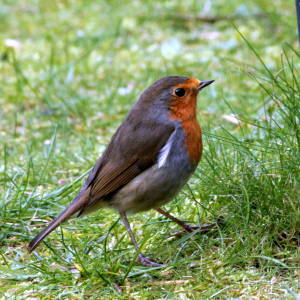fashions
These two stones make an interesting contrast. The elaborate carved trade stones were status symbols at their peak in the late eighteenth century, but at just the same time, lettering was becoming more desirable as the the skill to letter a stone accurately was becoming more widespread among masons. There are sometimes stones with both - in fact there is one just out of this shot that has lettering on the front face and trade carvings - in this case a farrier's tools - on the back, bridging the old and new fashions.
The fairly simple letters and word choice on the letter stone suggest the middle or late eighteenth century too, though there are no dates on either. Just Andrew Willson, Farmer in West Ardoch, erected his stone in memory of his father, Andrew Willson, late of the same.
The trade stone is a riot of tribute to its Mason. Stonemasons often had beautiful elaborate stones of their own design and work - begun, obviously, in anticipation of their future death. This one has all the tools - square, level, wedges, mell and trowel; the three towers of the guild badge, and beautifully executed Ogive arches in perfectly symmetrical pairs. Masons claim to have held the secret of construction of the arches of medieval cathedrals. As if that wasn't enough, there at least three symbols of freemasonry, and as a symbol of death, a 'deid bell', the Scots equivalent of a passing bell, a custom from the time when church bells were outlawed.

Comments
Sign in or get an account to comment.


